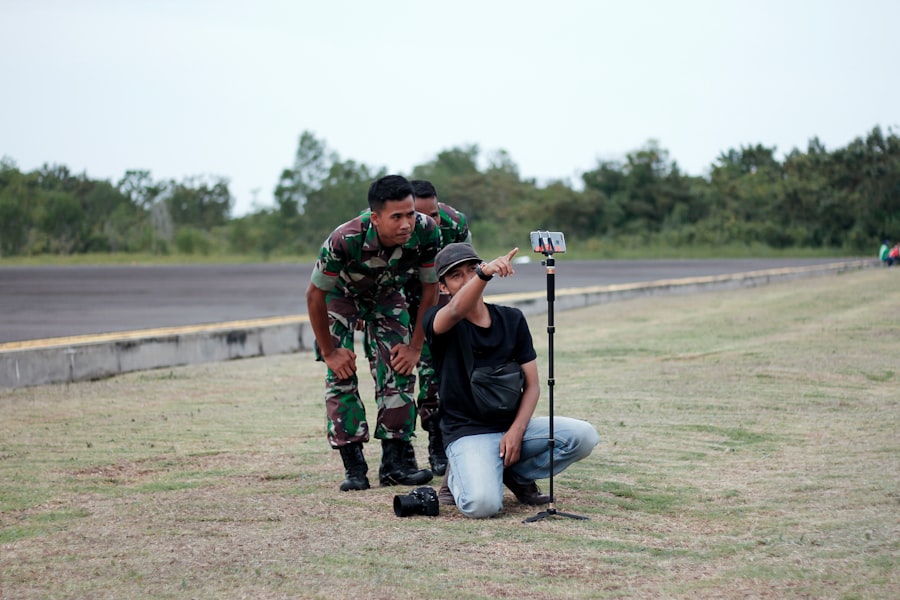Saddam Hussein’s ascent to power is a tale woven into the complex fabric of Iraqi history, marked by political maneuvering, strategic alliances, and a ruthless quest for dominance. Born in 1937 in a small village near Tikrit, Saddam’s early life was shaped by poverty and the tumultuous political landscape of Iraq. He joined the Ba’ath Party in the 1950s, a political movement that espoused Arab nationalism and socialism.
His rise began in earnest after the 1968 coup that brought the Ba’ath Party to power, where he quickly became a key figure in the new regime. By 1979, he had consolidated enough power to assume the presidency, marking the beginning of an era characterized by authoritarian rule and brutal repression. Under Saddam’s leadership, Iraq experienced significant modernization and economic growth, particularly due to its vast oil reserves.
He implemented ambitious infrastructure projects and sought to elevate Iraq’s status in the Arab world. However, this period of development was overshadowed by his oppressive tactics against dissenters and minority groups. The regime’s heavy-handed approach included widespread surveillance, imprisonment, and execution of political opponents, which instilled fear among the populace.
Saddam’s vision for Iraq was one of strength and unity, but it came at a tremendous cost to human rights and civil liberties.
Key Takeaways
- Saddam Hussein rose to power in Iraq through a combination of political maneuvering, brutal repression, and manipulation of ethnic and religious tensions.
- The Iraq-Kuwait conflict in 1990 led to the invasion of Kuwait by Iraqi forces, resulting in a swift and decisive military response from the international community.
- The invasion of Iraq by a U.S.-led coalition in 2003 resulted in the overthrow of Saddam Hussein’s regime and the beginning of a prolonged and costly conflict.
- The search for Saddam Hussein involved extensive intelligence operations and eventually led to his capture in December 2003.
- The capture of Saddam Hussein was a significant milestone in the Iraq War, but it did not bring an end to the violence and instability in the country.
The Iraq-Kuwait Conflict
The Iraq-Kuwait conflict was a pivotal moment in Middle Eastern history, rooted in a complex mix of historical grievances, economic interests, and regional power dynamics. Tensions between Iraq and Kuwait escalated in the late 1980s, primarily due to Iraq’s financial struggles following the Iran-Iraq War. Saddam Hussein accused Kuwait of overproducing oil, which he claimed was driving down prices and harming the Iraqi economy.
He also laid claim to Kuwaiti territory, arguing that Kuwait was historically part of Iraq. This rhetoric was not merely a pretext; it reflected deeper nationalistic sentiments that Saddam sought to exploit. In August 1990, after months of escalating tensions and failed diplomatic efforts, Saddam ordered the invasion of Kuwait.
The swift military action caught the international community off guard and led to widespread condemnation. The invasion was marked by brutal tactics, including the looting of Kuwaiti resources and the imposition of harsh control over the local population. The United Nations quickly responded by imposing economic sanctions on Iraq and calling for the withdrawal of Iraqi forces from Kuwait.
This conflict set the stage for a larger confrontation that would ultimately lead to the Gulf War.
The Invasion of Iraq

The invasion of Iraq in 2003 marked a significant turning point in global politics and U.S. foreign policy. Following the events of September 11, 2001, the United States shifted its focus toward combating terrorism and addressing perceived threats posed by rogue states.
The Bush administration identified Saddam Hussein as a key adversary, alleging that he possessed weapons of mass destruction (WMDs) and had ties to terrorist organizations. Despite widespread skepticism from various international actors, the U.S. launched a military campaign aimed at toppling Saddam’s regime.
On March 20, 2003, coalition forces led by the United States initiated “Operation Iraqi Freedom,” which began with a massive aerial bombardment intended to incapacitate Iraqi military capabilities. Ground troops swiftly moved into Iraq, encountering limited resistance as they advanced toward Baghdad. Within weeks, coalition forces captured the capital city, leading to the collapse of Saddam’s government.
However, the initial military success belied the challenges that lay ahead, as Iraq descended into chaos and sectarian violence in the aftermath of the invasion.
The Search for Saddam Hussein
| Metrics | Data |
|---|---|
| Duration of search | 2003-2006 |
| Number of troops involved | Over 600,000 |
| Cost of the search | Estimated 800 million |
| Number of intelligence reports analyzed | Over 600,000 |
| Number of false leads | Over 1,000 |
Following the fall of Baghdad, the search for Saddam Hussein became a priority for U.S. forces and intelligence agencies. Initially believed to be hiding within Iraq, Saddam’s whereabouts remained elusive as he evaded capture for several months.
The U.S. government offered a substantial reward for information leading to his arrest, while military operations intensified in an effort to locate him. The search was complicated by the emergence of insurgent groups and widespread instability throughout Iraq.
Saddam’s ability to remain hidden fueled speculation about his fate and sparked numerous rumors regarding his location. Some believed he had fled to neighboring countries or was being sheltered by loyalists within Iraq. As time passed without any concrete leads, frustration grew among U.S.
forces and Iraqi citizens alike. The search for Saddam became emblematic of the broader challenges facing coalition forces in stabilizing Iraq and restoring order in a country rife with violence and uncertainty.
The Capture of Saddam Hussein
On December 13, 2003, after nearly eight months on the run, Saddam Hussein was captured by U.S. forces in a raid on a farmhouse near Tikrit. His apprehension marked a significant milestone in the Iraq War and was celebrated as a major victory for coalition forces.
The operation was meticulously planned, involving intelligence gathered from various sources that ultimately led troops to his hiding place. When soldiers found him, he was discovered hiding in a small underground hideout, demonstrating his desperate attempts to evade capture. Saddam’s capture was met with mixed reactions both domestically and internationally.
While many Iraqis celebrated his downfall as an end to tyranny, others expressed skepticism about what his arrest would mean for Iraq’s future stability. The U.S. government hailed it as a turning point in their efforts to restore order in Iraq; however, it also raised questions about how to deal with the remnants of Saddam’s regime and the ongoing insurgency that had begun to take root in the country.
The Impact on the Iraq War

Saddam Hussein’s capture had profound implications for the ongoing conflict in Iraq.
The power vacuum left by his absence exacerbated divisions among various ethnic and religious groups within Iraq. In the months following his capture, violence surged as insurgent groups intensified their attacks against coalition forces and rival factions vied for control over territory and resources. The situation deteriorated further as sectarian violence escalated between Sunni and Shia communities, leading to widespread chaos and suffering among civilians.
The initial optimism surrounding Saddam’s capture quickly faded as it became evident that stabilizing Iraq would require far more than simply removing its dictator.
The International Response
The international response to Saddam Hussein’s capture was varied and complex, reflecting differing perspectives on U.S. involvement in Iraq and the broader implications for regional stability. Many countries expressed support for his arrest as a necessary step toward accountability for human rights abuses committed during his regime.
However, skepticism remained regarding the legitimacy of the U.S.-led invasion that had toppled him in the first place. Some nations criticized the manner in which Saddam was captured and questioned whether justice could be served fairly given the circumstances surrounding his arrest. Concerns about potential reprisals against former Ba’ath Party members and fears of escalating violence were prevalent among international observers.
As Iraq continued to grapple with instability, calls for increased diplomatic engagement and multilateral efforts to address the crisis grew louder on the global stage.
The Trial of Saddam Hussein
Saddam Hussein’s trial began on October 19, 2005, amid significant international attention and controversy. Charged with crimes against humanity for his role in atrocities committed during his rule—most notably against the Kurdish population during the Anfal campaign—the trial aimed to hold him accountable for his actions while also serving as a symbol of justice for victims of his regime. The proceedings were marked by dramatic moments as Saddam defiantly rejected the legitimacy of the court and maintained his position as a leader even while facing serious charges.
The trial faced numerous challenges, including security concerns for judges and witnesses amid ongoing violence in Iraq. Critics argued that it was politically motivated and questioned whether it could truly deliver justice given the chaotic context in which it unfolded. Despite these challenges, Saddam’s trial became a focal point for discussions about accountability and reconciliation in post-Saddam Iraq, highlighting both the complexities of transitional justice and the difficulties inherent in addressing past atrocities.
Legacy of Saddam Hussein
Saddam Hussein’s legacy is one fraught with contradictions—an emblem of both national pride and profound suffering for many Iraqis. For some, he is remembered as a leader who sought to elevate Iraq on the world stage through modernization efforts and assertive foreign policy; for others, he is synonymous with tyranny, oppression, and brutality against those who opposed him or belonged to marginalized groups. His reign left deep scars on Iraqi society that continue to influence political dynamics today.
The impact of Saddam’s rule extends beyond his time in power; it has shaped contemporary discussions about governance, human rights, and national identity in Iraq. His legacy serves as a reminder of the dangers posed by authoritarianism and unchecked power while also highlighting the complexities involved in rebuilding a nation torn apart by decades of conflict and repression.
Lessons Learned from the Capture
The capture of Saddam Hussein offers several critical lessons regarding military intervention, nation-building efforts, and post-conflict reconstruction. One key takeaway is that removing a dictator does not automatically lead to stability or peace; rather, it can exacerbate existing tensions within society if not accompanied by comprehensive strategies aimed at fostering reconciliation among diverse groups. The challenges faced in Iraq underscore the importance of understanding local dynamics before intervening militarily.
Additionally, Saddam’s capture illustrates the necessity of establishing effective governance structures following regime change to prevent power vacuums from emerging. Without robust institutions capable of managing political transitions and addressing grievances among various factions, countries can descend into chaos rather than achieve lasting peace.
The Aftermath of Saddam Hussein’s Capture
In the aftermath of Saddam Hussein’s capture, Iraq continued to grapple with profound instability marked by sectarian violence, insurgency, and political fragmentation. His arrest did not quell dissent or eliminate threats posed by extremist groups; instead, it highlighted underlying issues that had long been suppressed during his rule. As various factions vied for power amid ongoing violence, efforts toward national reconciliation faced significant obstacles.
The legacy of Saddam’s capture remains evident today as Iraq continues its struggle for stability amidst ongoing challenges related to governance, security, and social cohesion. While some progress has been made since his downfall—such as democratic elections—deep divisions persist within Iraqi society that complicate efforts toward unity and healing from years of conflict. Ultimately, Saddam Hussein’s capture serves as both a historical milestone and a cautionary tale about the complexities inherent in addressing legacies of tyranny while striving for peace in post-conflict societies.
The capture of Saddam Hussein on December 13, 2003, marked a significant turning point in the Iraq War, symbolizing the end of his regime’s power. For those interested in exploring more about pivotal historical events and their impacts, you might find the article on Hey Did You Know This intriguing. This page offers insights into various historical milestones and lesser-known facts that shaped the world, providing a broader context to understand the significance of such events.
WATCH NOW! How the US Hunted and Captured Saddam Hussein: The Untold Story of Operation Red Dawn
FAQs
What was the capture of Saddam Hussein?
The capture of Saddam Hussein was an event that took place on December 13, 2003, when the former President of Iraq, Saddam Hussein, was found hiding in a small underground bunker near his hometown of Tikrit.
Who captured Saddam Hussein?
Saddam Hussein was captured by a joint operation of the United States military and the Iraqi police forces.
Where was Saddam Hussein captured?
Saddam Hussein was captured in a small underground bunker near his hometown of Tikrit, which is located in the northern part of Iraq.
What were the circumstances of Saddam Hussein’s capture?
Saddam Hussein was found hiding in a small underground bunker after a months-long manhunt by the United States military and Iraqi police forces. He was discovered without resistance and was taken into custody.
What were the implications of Saddam Hussein’s capture?
The capture of Saddam Hussein was a significant event in the Iraq War, as it marked the end of his regime and was seen as a major victory for the coalition forces. It also had a symbolic impact on the Iraqi people, signaling the downfall of a dictator who had ruled the country for decades.
